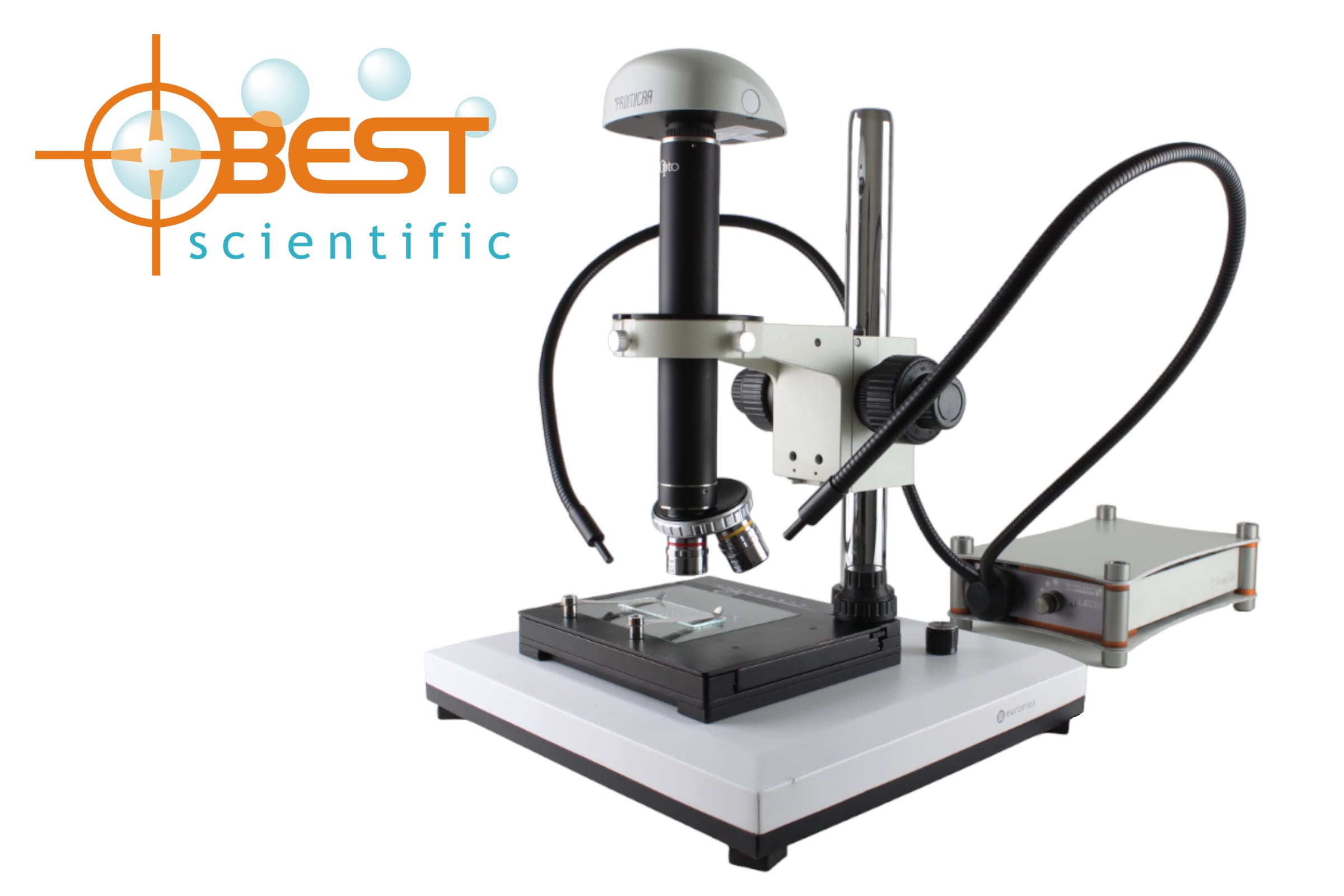Aston Resolv4K system build
Custom Optical Vision System for Particle Motion Analysis at Aston University Client: Aston Institute for Membrane Excellence (AIME), Aston UniversityIndustry:


Best Scientific have recently installed a new vision system solution configured to expedite a quality control inspection process. We visited our client Pall Corporation, after they expressed concerns their current system may be inefficient, dated, and missing out on new innovations available.
Consultation:
Our first step in making the system more efficient was to fully understand this QC process, so we can start to build the functionality required into the system. The fundamentals of this process were:
Our next step was to evaluate the current equipment used to complete this task and identify where improvements could be made.
Our last step was to learn more from users, about their experience working with the current system. Most importantly collecting feedback on the pros and cons they encounter with the equipment and QC process every day.
Design Brief:
With these consultations accumulated, it was possible to combine them into a detailed design brief that would be used to configure the new system against.
Solution
With the design brief set I was able to select products from the Best Scientific portfolio to create a custom-made optical inspection system, tailored to the client’s process. Equipment list and rationale for doing so is explained below.
Promicra 2/3” digital camera and software suite
I wanted a digital camera with largest possible sensor to increase FOV on the system. This is because the 5x and 10x Magnifications were not able to be changed as are inherent to the QC process. 2/3” was the maximum sensor size supported by below Opto GmbH vision system, so that was chosen.
The Promicra camera was also good resolution at 5mp showing users more detail of what they needed to see. I packaged the camera with Promicra software and relevant modules that aid with Manual counting and live measurements. There is a simple mouse click counting element to the software, so the user can clicks on objects of interest and the software will count them, and provide totals for report export. The software also has an intuitive measurement facility for click and drag line measurements. I calibrated the system with a stage micrometer on installation on the client’s computer.
Opto GmbH fixed magnification optical vision system
This modular optical system allows for various configuration of properties and functions. In this instance I added a nose-piece to the bottom of the system so that the user could quickly change between 5x for counting to 10x for measuring. The TV tube between the nose-piece and camera provided a perfect anchor point to mount the system to as well as deliver the image to the camera.
Nikon Metrology LWD objective lenses 5x and 10x
I combined Nikon lenses with this system for many reasons. Firstly, they have an RMS thread which is an interface the Opto nose-piece supports. Secondly, they conform with the relevant tube length of the optical system to give the requested 10x and 5x at the camera. Thirdly because these lenses are LWD and configured for MET applications, therefore fit for purpose. Lastly because Nikon MET lenses are some of the best available.
Starlight LED light source with rigid goose neck fibre light guides
This LED module gives a powerful, reliable, and economical LED illumination solution. The robust heavy housing will allow the LED source to remain in place while the user adjusts the rigid goose-neck light guides. Simply to use and importantly robust as a moving part.
Euromex manual XY stage with low drive controller & hardware (base, pillar, focus head)
It was important to maintain the movement of the sample for the client’s process, so I selected this simple manual XY stage and custom mounted it to the base. The control knob is so positioned to allow the user to rest comfortably and can be rotated for left or right handed operators. The hardware also included course and fine focus for easy adjustment. Overall, the package fits neatly together to keep the footprint small.
Summary:
I felt that the three-part consultation process was key to the success of this configuration. Taking time to understand the QC process gave us a clear instruction of what the system needed to achieve. Studying the current system gave inspiration on where specific equipment could be upgraded. Talking to the users focused attention to areas where improvements needed to be introduced. Combining all this information gave info to work with, and enabled the final solution shown.
I also completed delivery, instillation, calibration, and a short session of instruction for the users. Making sure they could adapt to the changes and benefits of the new system If you have specific micro inspection needs or want solutions to streamline inspection process, please do consult with us for a tailored proposal. Email james@bestscientific.co.uk
Custom Optical Vision System for Particle Motion Analysis at Aston University Client: Aston Institute for Membrane Excellence (AIME), Aston UniversityIndustry:
USB-Powered Portable Ring Light for Field Microscope Illumination Delivering a customised, portable lighting solution for field microscopy, ensuring precision, portability,
Pairing Optics and illumination: Best practices Matching Ring Light Illumination to an Optical System. Explore how matching ring light illumination
Zoom System Configurations for Broad Scale Coverage – Oxford University Case Study Explore how Navitar’s 12x Zoom System was expertly
Optical Vision System Optimisation Case Study: Navitar Resolv4k Lens Series Introduction: Best Scientific proudly announces the successful completion of configuring,
Precision Optics tailored for Success: Optical Vision System Supply and Configuration. Introduction: Discover how Best Scientific seamlessly configured and supplied
New compound microscopes personally delivered and installed to University of Portsmouth. Best Scientific recently completed the supply of 60 compound
New Moticam A series microscope cameras, now available from Best Scientific. Launched in the summer of 2022 this new line